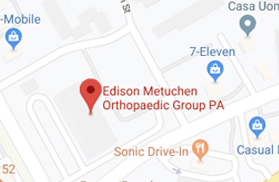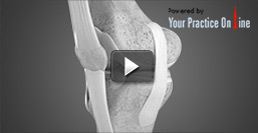Shoulder
Normal Anatomy of the Shoulder Joint
The shoulder is the most flexible joint in the body making it the most susceptible to instability and injury. It is a ‘ball-and-socket’ joint. A ‘ball’ at the top of the upper arm bone, humerus, fits neatly into a ‘socket’, called the glenoid, which is part of the shoulder blade, scapula.
Find out more about Normal Anatomy of the Shoulder Joint with the following links
Carpal Tunnel Syndrome
Carpal Tunnel Syndrome is a common, painful, progressive condition that is caused by compression of the median nerve at the wrist area.
Find out more about Carpal Tunnel Syndrome with the following link
Shoulder Instability
Shoulder instability is a chronic condition that causes frequent dislocations of the shoulder joint. A dislocation occurs when the end of the humerus (the ball portion) partially or completely dislocates from the glenoid (the socket portion) of the shoulder.
Find out more about Shoulder Instability with the following link
Biceps Tenodesis
Coming soon
Find out more about Biceps Tenodesis with the following link
Rotator Cuff Tear
The rotator cuff is a group of tendons in the shoulder joint that cover and provide support to the shoulder joint, enabling wider range of motion. A tear in the rotator cuff is one of the most common causes of shoulder pain in middle aged adults and older individuals.
Find out more about Rotator Cuff Tear with the following links
Frozen Shoulder
Frozen shoulder is a painful shoulder condition that limits movement and causes stiffness in the joint. It is also called adhesive capsulitis and may progress to the state where you may find it very hard to move your arm. Frozen shoulder is more common in older adults between 40 and 60 years, and occurs more often in women than men.
Find out more about Frozen Shoulder with the following link
Shoulder Impingement
Shoulder impingement is the condition of inflammation of the tendons of the shoulder joint. It is one of the most common causes of pain in the adult shoulder. The shoulder is a ‘ball-and-socket’ joint. A ‘ball’ at the top of the upper arm bone, humerus, fits neatly into a ‘socket’, called the glenoid, which is part of the shoulder blade, scapula. Shoulder impingement is also called as swimmer’s shoulder, tennis shoulder, or rotator cuff tendinitis.
Find out more about Shoulder Impingement with the following link
Clavicle Fracture
Clavicle fracture or broken collarbone is a very common injury associated with contact sports such as football and martial arts, as well as impact sports such as motor racing. A direct blow over the shoulder, fall on an outstretched arm or motor vehicle accident may also cause the clavicle bone to break.
Find out more about Clavicle Fracture with the following links
Shoulder Arthroscopy
Arthroscopy is a minimally invasive diagnostic and surgical procedure performed for joint problems. Shoulder arthroscopy is performed using a pencil-sized instrument called an arthroscope.
Find out more about Shoulder Arthroscopy with the following links
Shoulder Joint Replacement
Shoulder joint replacement is a surgical procedure performed to replace a damaged shoulder joint with artificial implants. It is usually performed to relieve shoulder pain when the joint is severely damaged by osteoarthritis, rheumatoid arthritis, post-traumatic arthritis, rotator cuff tear arthropathy, avascular necrosis (tissue death), fracture and failed former shoulder replacement surgery.
Find out more about Shoulder Joint Replacement with the following links
SLAP Repair
Your shoulder joint is a ball and socket joint made up of the upper arm bone, the shoulder blade and the collarbone. The head of the upper arm bone fits into the socket of the shoulder joint known as the glenoid cavity. The outer edge of the glenoid is surrounded by a strong fibrous tissue called the labrum.
Find out more about SLAP Repair with the following links
Click on the topics below to find out more from the orthopedic connection website of American Academy of Orthopaedic Surgeons.
- The Shoulder
- Arthritis of the Shoulder
- Broken Collarbone
- Dislocated Shoulder
- Fracture of the shoulder blade (scapula)
- Frozen Shoulder
- Rotator Cuff Tears
- Separated Shoulder
- Shoulder Impingement (Bursitis, Tendinitis)
- Shoulder Joint Replacement
- Shoulder Joint Tear (Glenoid Labrum Tear)
- Thoracic outlet syndrome
- Shoulder Arthroscopy
–>
 Menu
Menu






